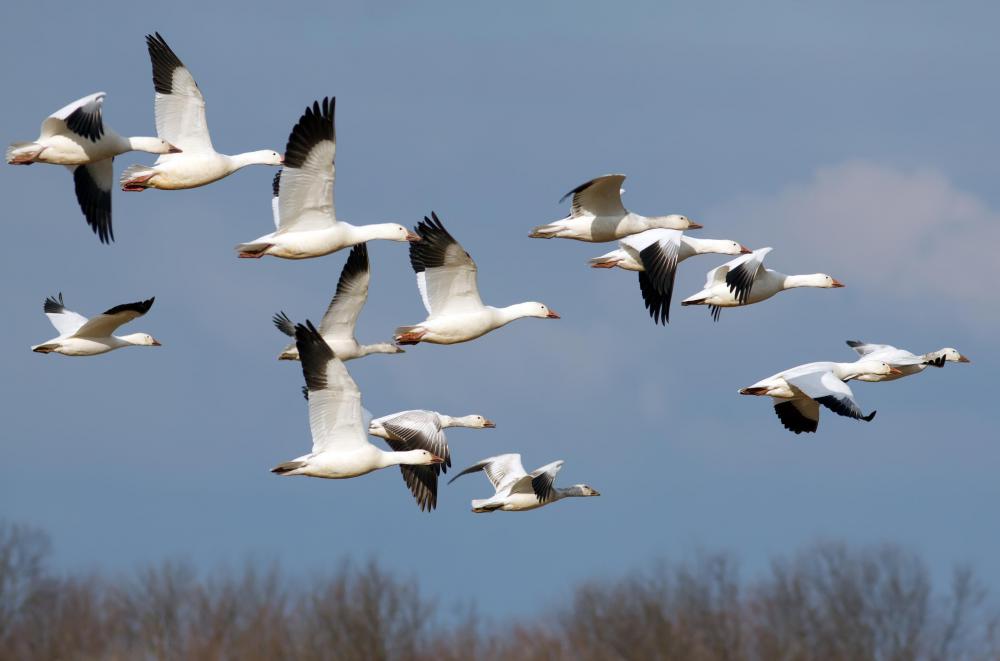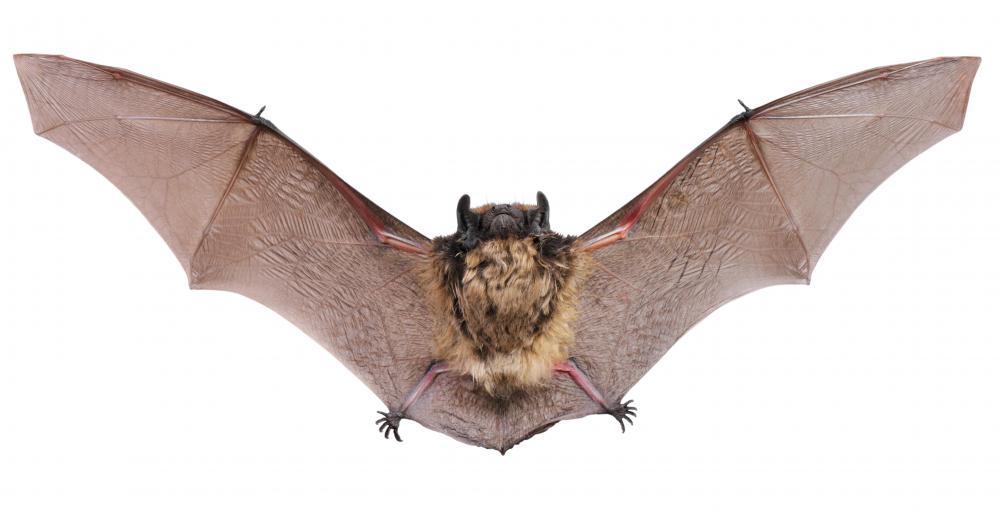At WiseGEEK, we're committed to delivering accurate, trustworthy information. Our expert-authored content is rigorously fact-checked and sourced from credible authorities. Discover how we uphold the highest standards in providing you with reliable knowledge.
What are the Different Types of Evolution?
A species will develop according to the environment it exists in, and predators, climate changes, and other environmental factors can all create reasons for a species to adapt. These adaptations are part of the evolution of the species, allowing it to change in a way that will increase its chances of survival. There are three types of evolution: divergent, convergent, and parallel.
Divergent evolution is the most commonly known, and it involves one species that eventually separates into two separate ones. For example, a flock of migratory birds, heading for a warmer climate, gets divided in a storm. One half of the flock continues on to the original destination, while the other half lands on a new island and decides to stay. Over time, members of the second group develops characteristics that allow them to better survive on the island and become a different species than their ancestors, which were initially separated from the larger flock. What was once one species has now been separated into two.

The second type of evolution — and usually the hardest to understand — is convergent evolution. This type explains how two or more species can develop similar traits in separate types of environments. Animals developing wings is one example of convergent evolution because there was no one common ancestor for all winged animals. Due to their individual environments, these animals all developed wings on their own, through generations of evolution. Wings were developed based on the physics of flying, not on a pre-programmed internal blueprint handed down from a similar ancestor.

Convergent and parallel evolution are very similar and are easily confused. When two separate species in the same environment develop the same adaptations for survival, it is called parallel evolution. This begins with two similar species that exist in similar environments and,over time, they will evolve in very similar ways. One example of parallel evolution is the North American Cactus and the African euphorbia. These two plants belong to different families, but share the same sort of environment. Because of that, they have developed the same adaptations for survival: the ability to store water in their thick stems and sharp quills to ward off predators. Both plants can survive in hot, dry climates.

Evolution is a process, and species adapt and evolve to better survive in their environments. Similar environments can cause similar adaptations in different species, and different environments can cause different adaptations in similar species. Studying the affect of environmental factors on the evolution of a species is the best way to make educated guesses on both the history and the future of a species. By considering all three types of evolution, it is possible to get a very accurate idea of how a species of plant or animal has developed into its current form.
AS FEATURED ON:
AS FEATURED ON:













Discussion Comments
@ Submariner- While it is true that 99% of all species that ever lived are now extinct, you cannot expect species to evolve within the timeframe of human evolution. Before humans were around, species went extinct at a rate of about one to two species per thousand per millennium. In the recent past, the rate of extinction has climbed to about 80-100 extinctions per thousand species. In the future, it is predicted that we will be destroying species at a rate that is much faster than they can evolve, so we may end up with a situation where we have no more amphibians, or fish, or reptiles. We have no idea how ecosystems will respond to such huge disruptions in their biological diversity cycles.
As far as passing down education, this is mostly reserved for humans and a select few birds and mammals. This is called cultural evolution, and while it does happen on a human time scale, it applies to such few species that it would do no good. One imaginable scenario that could happen if we move the extinction rate beyond the evolution rate is a planet overrun by microbes, bacterium and viruses...not a friendly place for any species, including our own.
@ Subnmariner- Charles Darwin's evolution theory was based on five observations and inferences on those observations. Here are Darwin's observations simplified:
#1- If all individuals born in a species reproduced successfully, then the population of that species would experience exponential growth.
#2- Populations fluctuate seasonally, but otherwise remain stable in size.
#3- resources are limited, and populations are limited by the resource with the smallest supply. These first three observations created the basis of competition theory and survival of the fittest.
#4- There is extensive characteristic variation in the population of a species.
#5-Most of this variation is genetic.
What were Darwin's 5 types of evidence for evolution? Also, what is the big deal with extinction if animals go extinct naturally, and evolution is real. You would think that since animals can evolve, other animals could adapt to their absence. You would think that the animals that do not become extinct could simply learn to adjust without these other layers in an ecosystem and just evolve.
Post your comments